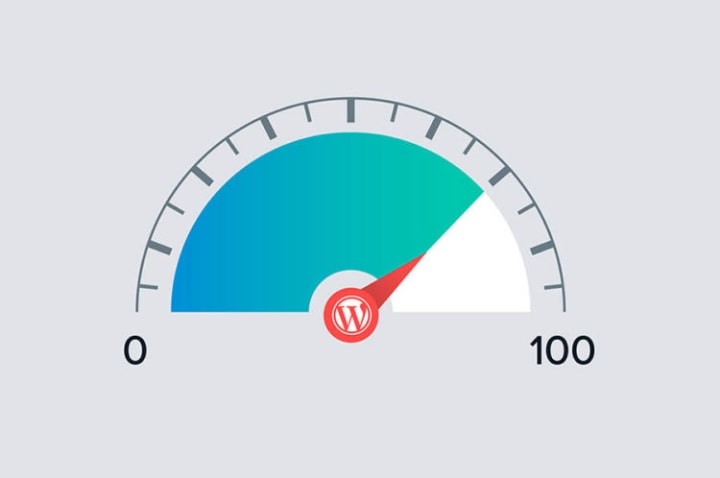Top 10 Criteria For Competitor SEO Analysis
Seo Competitor Analysis Checklist

Monitoring of delivery leaders is of strategic importance at different stages: from developing the site structure to optimization. What parameters to focus on when analyzing and how to do it correctly.
Competitor analysis is essential for any business, but it plays an important role in e-commerce. Monitoring of issuing leaders is of strategic importance at different stages: from the development of the site structure to its subsequent optimization. For successful projects, competitor analysis is in many ways a continuous process. It allows you to track the Google ranking logic and understand which search engine optimization methods work best. We talk about what parameters should be focused on when analyzing sites and how to do it correctly - in our material.
Create a Selection of Competitors
The first thing that is important to understand is the analysis of competitors in search results that do not always turn out to be opponents offline. A small local SEO company, which in reality no one will regard as a commercial threat, can hold the top results, ranking better than brands with exorbitantly high financial turnover. Therefore, the selection of competitors is not based on commercial data, but I analyze the issuance of specific search queries.
I would suggest manually collect information. You drive into Google the main keywords on which the site is being promoted, and analyze the first 10-15 sites that are displayed in each of the systems for the main request. Using simple and affordable plugins for SEO analysis, for example, SimilarWeb, SEO & Website Analysis, etc., they analyze the traffic of each resource and the age of the domain directly from the browser, thus more accurately understanding whether it makes sense to regard the site as a competitor or not.
Such mechanics are very primitive and time consuming. Therefore, experts collect information using more serious SEO analysis tools - Semrush, Ahrefs, Serpstat. Such multi-functional SEO platforms in a few clicks give a complete list of competitors for a given domain and pull up additional information about each of them: show the number of common and unique keywords, growth dynamics, etc.
Creating a selection of competing sites for specific search queries is only the beginning. Further, it is important to understand the mechanisms of their successful ranking; for this, each of the sites is examined for a number of parameters.
1. The Semantic Core
Analysis of the semantic matrix allows you to shed light on many issues related to search ranking. For these purposes, you can use the already mentioned tools - SEO-platforms Semrush, Ahrefs, Serpstat and other services. After analyzing the semantic profile of your opponents, you will understand how complete your core is and whether you need to expand it. You will also be able to see by what requests the websites of the issuing leaders are ranked, but your pages are not ranked - in this case it is important to understand the reason for this situation and try to eliminate it. Comparison of semantics gives a visual representation where you do not reach the assortment and in which direction it is most promising to expand.
2. Site Structure
Analysis of the semantic core provides important information about the structure of sites from the top of the SERP. You will understand not only the logic of the general organization of these projects but also which promotion strategy is most effective in a particular niche. For example, which pages should be optimized for high-frequency queries, and which for low-frequency ones. What is the best way to expand the structure of an eCommerce site: with tagged pages, filters, or other solutions. Which sections generate traffic more efficiently and whether they are present on your website. For all these and other questions critical for SEO, you can get answers by examining the structure of sites from the top of the search results.
3. Metadata Optimization
Design Title, Description, page titles H1, H2, etc. These requirements are standard, but different commercial niches may have their own nuances. Therefore, it will not be superfluous to analyze how the metadata of the main categories/subcategories, tagged pages, etc is arranged sites from the top of the SERP on your topic.
First of all, it makes sense to focus on the keys in Title and H1. To understand the same or different occurrences are used in both tags, what frequency these keys are, in what quantity and in what word form they are entered in each of the headers. By comparing the metadata of different pages, you will understand what method your opponents use to create tags - automatically generate or manually register.
Information in snippets also matters in the analysis of competitors. Here we recommend that you pay attention to the features of creating Description: its size, method of generation, the presence of keywords, and their density. A separate aspect is the introduction of micro-marking, due to which additional information that is valuable to users and search robots is pulled into the snippet. A competent analysis of these points will allow you to adopt successful strategies for optimizing metadata that works well in your commercial niche.
4. Features of Content on Different Pages
Content is one of the key components of search engine promotion. Your task is to carefully study the content of various pages of competitors and understand with what strategies they achieve effective ranking. There are a lot of unobvious moments in matters related to content. To act consistently and as efficiently as possible, we recommend analyzing each group of pages separately.

Home. This page is not just the facade of any site and its navigation center, but also plays one of the key roles in matters of search promotion. Home focuses on itself the main percentage of external links, actively generates search traffic and distributes its considerable weight over the site. It is from her that the optimization of any commercial project begins.
When analyzing the content of the main one among competitors, the first thing you should focus on is three points: the size of the text, the use of the headers H1, H2, H3 and the keys (their number, frequency, occurrence features). Also, pay attention to the use of images, the quality of writing the text itself, the compatibility between key queries.
Categories / Subcategories / Tag Pages . Search algorithms pay special attention to texts in product headings; therefore, they try to work as accurately as possible to fill these sections. First of all, it’s important to evaluate whether your competitors even place texts on such pages — today it’s not necessary to promote product headings. If used, your task is to analyze in which part of the page they place the text block, what it is in quality and how it is formatted, how many characters on average contains a description of how competitors handle keys here.
Product Cards. The importance of the textual descriptions on these pages is also questioned by many SEOs. Having studied the contents of the cards from the leaders of the issuance, you can make sure whether you should allocate resources to create descriptions or not. But what exactly can not be neglected - informative tables with product characteristics, high-quality images, multimedia content, such as video reviews. Carefully study how these aspects are implemented on top sites.
Section with articles . This is another important cluster for analysis. Please note how often competitors post publications, how many characters on average their texts contain, how much article mass on the site, whether it is optimized for the keys and what queries are used in publications.
5. Link Building Strategies
An analysis of the external link profile will help you understand which link building principles your competitors are using. The number of referring pages and domains can be determined using fairly simple tools, such as the browser-based application SEO & Website Analysis and the like. More serious programs such as the already mentioned Ahrefs or Serpstat will be able to provide an expanded compilation of information. For example, they can structure referring domains by region and unload the anchor lists of each site. The latter is especially important since You will clearly appreciate the mechanics of their promotion with anchor links. Thus, having studied the link strategies of competitors, you will find out how diverse their external profile is, on what topics they are hosted, how they work with commercial entries, and which domains are used as donors.
6. Linking Mechanisms
Proper internal linking is one of the most important factors in internal website optimization. A bunch of different pages using hyperlinks correctly distributes the link weight on the site and improves behavioral factors as users actively navigate through sections. All this directly affects the ranking. Your task is to analyze which linking formats competitors use on their sites. Links can be put in texts on category pages, from filter sections, blocks for cross-sales, etc. It will not be superfluous to pay attention to the presence of end-to-end links and a navigation chain of bread crumbs. If your competitors use these solutions, it makes sense to think about them as well.
7. Download Speed of Different Pages

About how download speed affects the ranking and why any promotion strategy is pointless if you have a slow site - we have discussed this in our articles several times. You can find out how quickly competitors' pages — the main categories and subcategories, product cards, and other sections — are loaded using available programs, for example, the Google tool PageSpeed Insights, GTMetrix tools, WebPageTest, etc. If your speed is noticeably inferior to that of your competitors, its optimization should Become a priority. The advantage of PageSpeed Insights is that in addition to a simple calculation of speed, the algorithm gives personalized recommendations for speeding up the site: separately for desktop and mobile versions.
8. The Technical Side of the Website
When SEO analysis of competitors is important to know, including the technical aspects of their websites. The most affordable tool for solving this problem is the Chrome plugin BuiltWith Technology Profiler. In a few clicks, it gives detailed information about the type of CMS used, frameworks, JavaScript functions, analyzes libraries, content and other useful information related to the technical side of the site.
9. Analysis of Paid Issuance
There are tools that allow you to analyze the advertising strategies of competitors. The functionality of the same Serpstat is able to provide information about the most effective keywords, advertised landing pages, ad texts and their positions; The cost of the click and the budget of the advertising campaign are calculated separately. Studying competitors' ads will allow you to adopt techniques that will increase the commercial return on your investments in paid traffic.
10. Analysis of Social Activity
Researching SMM strategies will help you understand which channel works best in your niche and which social network is worth betting on. To do this, they study the number and activity of subscribers on different social platforms: they learn how actively they like, repost and comment on posts. After conducting such an analysis, you will be able to adopt effective SMM strategies and understand which content resonates most with your audience.
About the Creator
Iqra Iqbal
The harder you work for something, the greater you’ll feel when you achieve it.
Enjoyed the story? Support the Creator.
Subscribe for free to receive all their stories in your feed. You could also pledge your support or give them a one-off tip, letting them know you appreciate their work.






Comments
There are no comments for this story
Be the first to respond and start the conversation.